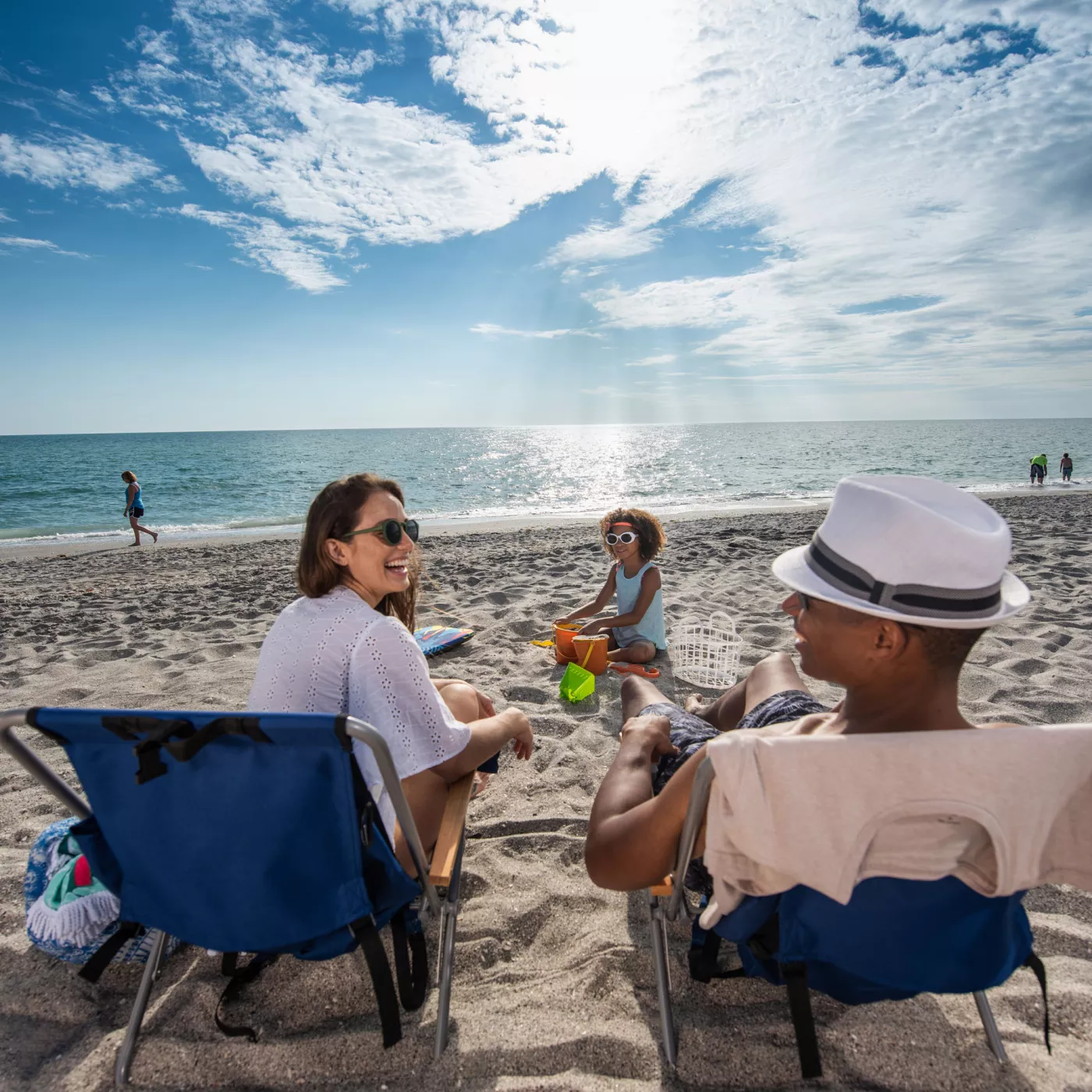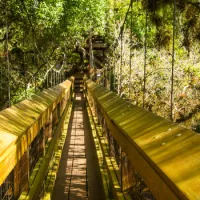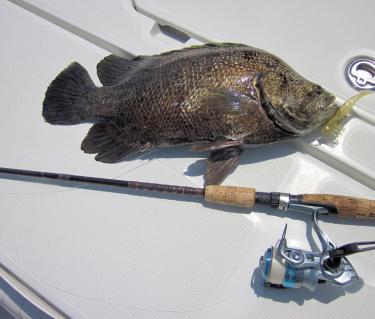Monthly Fishing Reports from Sarasota Area
Here’s the latest report from fishing guides in the area.
Here’s the latest report from fishing guides in the area.
November Fishing Report—Capt. Rick Grassett
Rick Grassett is a Charter Captain with CB's Saltwater Outfitters on Siesta Key
You may find blues, Spanish mackerel and pompano mixed with trout on deep grass flats this month. You should also find larger trout in skinny water along with reds. Snook will stage around bars and on shallow flats as they make their move towards winter areas. Action in the coastal gulf with false albacore, tripletail, Spanish mackerel, blues and more should explode!
Snook
You should find snook staging around docks and bridges in the ICW and along sand bars and in potholes on shallow flats. They may be along mangrove shorelines when the tide is high. I like CAL jigs with 3” shad tails and surface walking top water lures like the DOA “PT” in shallow water for snook. CAL jigs with shad tails or jerk worms, DOA TerrorEyz, DOA Shrimp and small white flies, like my Grassett Snook Minnow, will work well around dock and bridge fender lights. Fish the strongest tides for the best action.
Reds
Reds will spread out on shallow grass flats in November. You should find them along bars, in potholes or around docks. Look for them along mangrove shorelines when the tide is high, but they are just as likely to be roaming with mullet schools in shallow water. CAL jigs with shad tails, grubs or jerk worms and gold spoons should work well for reds in shallow water. Fly anglers may score with lightly weighted flies, such as Clousers, spoon flies or my Grassett Flats Minnow fly.
Big Trout
You may also find big trout along with reds in shallow water this month. The same lures and flies that you use for snook and reds in shallow water will also work for trout. You’ll also find trout on deep grass flats in water from 3’ to 7’ deep. I like to drift and cast quartering ahead of my drift with CAL jigs, DOA Deadly Combos or weighted flies on sink tip fly lines to locate trout. In addition to making a series of drifts to find fish, look for baitfish on the surface or birds to find them. I feel that it’s important to protect large trout, which are usually female breeders. Full regulations and details can be viewed at https://myfwc.com/ .
Blues, Spanish Mackerel, Flounder
You may also find blues, Spanish mackerel, flounder or pompano on deep grass flats this month. The techniques to find them is the same as for trout, although blues and Spanish mackerel may feed on the surface making them easier to find. Likewise with pompano, that may skip on the surface when you run or drift past them. When that happens, circle back upwind and drift back through the area, casting ahead of your drift. I like a 1/16 or 1/8-ounce chartreuse CAL jig head with a gold grub for pompano. You’ll need to add wire or heavy fluorocarbon when toothy fish are around to keep them from biting you off. You may find flounder on a mixture of grass and sand, particularly on the edges of bars or in potholes.
False Albacore and Tripletail
There should be good action in the coastal gulf with false albacore (little tunny), Spanish mackerel, blues, tripletail or cobia. Look for Spanish mackerel, blues or false albacore feeding on the surface to find them. Diving terns or terns hovering just above the surface of the water and moving fast will give their presence away if they aren’t on top. CAL jigs with shad tails and jerk worms and top water plugs will work well. Fly anglers should score with small white flies, Ultra Hair Clousers, poppers or Crease flies. Look for tripletail around crab trap floats and cast DOA Shrimp, CAL jigs with shad tails or DOA TerrorEyz to them. Cobia may also be found around crab trap floats, swimming on the surface or over structure. They will require medium-heavy spinning tackle or at least a 9-weight fly rod. Larger baits like DOA Baitbusters, CAL jigs with 5½” jerk worms or the DOA SnakeKoil should work well for cobia on spinning tackle. Fly anglers should score with wide profile baitfish patterns.
Seasonal Tips
This a great month for fishing the flats or the coastal gulf. Since the action in the coastal gulf is seasonal and will end when it gets cooler, I like to fish there when conditions allow it. However, if that’s not for you or if conditions won’t allow it, there will be plenty of action for a variety of fish on shallow and deep grass flats of Sarasota Bay. Our natural resources are under constant pressure, please limit your kill, don’t kill your limit!
Yearly Overview
January - It can be one of the toughest months of the year to fish. When the tide is low, look for reds tailing on shallow grass or reds, trout and more in potholes or around docks. When it is high, look on shallow grass flats on sunny afternoons. Action with trout, blues, Spanish mackerel, pompano and more on deep grass flats can be good depending on conditions.
February - February can be a tough month to fish. With frequent fronts and cool water, fish aren’t always in an eating mood. If you’re able to pick good tides combined with favorable weather conditions, you should be successful. Trout and redfish should be good shallow water options this month. You may also find trout along with blues, Spanish mackerel, pompano and flounder on deep grass flats. Look for sheepshead, flounder, reds and more around docks.
March - There should be good action with reds, trout and snook in skinny water in March as baitfish become more plentiful. Look for Spanish and king mackerel, cobia, tripletail and false albacore (little tunny) in the coastal gulf. Night snook fishing in the Intracoastal Waterway (ICW) should also be a good option this month.
April - This is a great month for snook, Reds, and trout on warm, shallow flats due to an increase in baitfish. Spanish mackerel, blues and pompano in passes or on deep grass flats. Tarpons, Spanish mackerel, false albacore (little tunny), cobia and tripletail should also make an appearance in back country areas and in the coastal gulf later in the month.
May - Tarpon, Spanish mackerel, tripletail, cobia and false albacore (little tunny) can be found along our beaches in the coastal gulf. Snook will move into passes and the surf and reds and trout should feed heavily on shallow flats as baitfish become more plentiful. Trout, blues, Spanish mackerel and more should be good options on deep grass flats
June - Tarpon should be plentiful in the coastal gulf this month as big schools of fish migrate along our beaches. Also look for cobia, tripletail and false albacore (little tunny) in the coastal gulf.
July - There are lots of options this month, late season tarpon, snook in the surf or at night or fishing skinny water for reds or big trout. Tarpon fishing is best early in the day in shallow waters.
August - Tarpon will move into estuaries this month. You may also find juvenile tarpon in creeks, canals and turning basins. Reds should be schooling on shallow flats and big trout will prowl the same waters at dawn. Also look for trout on deep grass flats mixed with blues, pompano, Spanish mackerel and more.
September - Fishing dock lights before dawn is usually dependable for snook and more and is a great way to beat the heat. Juvenile tarpon and reds may also frequent dock lights this time of year. Fishing deep grass flats of Sarasota Bay is a good choice for action with a variety of species including trout, blues, and Spanish mackerel.
October - Schools of reds will begin to break up and scatter on shallow flats. There should also be good action with snook and big trout in shallow water. Snook will gorge themselves at night around lighted docks in the ICW. There should also be good action in the coastal gulf with Spanish mackerel, false albacore (little tunny), tripletail and cobia. You might also still find tarpon anywhere from upper Charlotte Harbor and Tampa Bay to along the beaches.
November - This a great month for fishing the flats or the coastal gulf. Since the action in the coastal gulf is seasonal and will end when it gets cooler, there will also be plenty of action for a variety of fish on shallow and deep grass flats of Sarasota Bay.
December - This is a good month for catch and release snook action around lighted docks in the ICW. Also, there is good action in the coastal gulf with false albacore (little tunny), Spanish mackerel and tripletail, depending on conditions.

![Boat parking at The Crow’s Nest in Venice [Photo: Lauren Jackson]](/sites/default/files/styles/popular_stories_teaser/public/2023-import/The-Crow%2527s-Nest-cropped__OPT.jpg.webp?itok=ycs37M-O)



